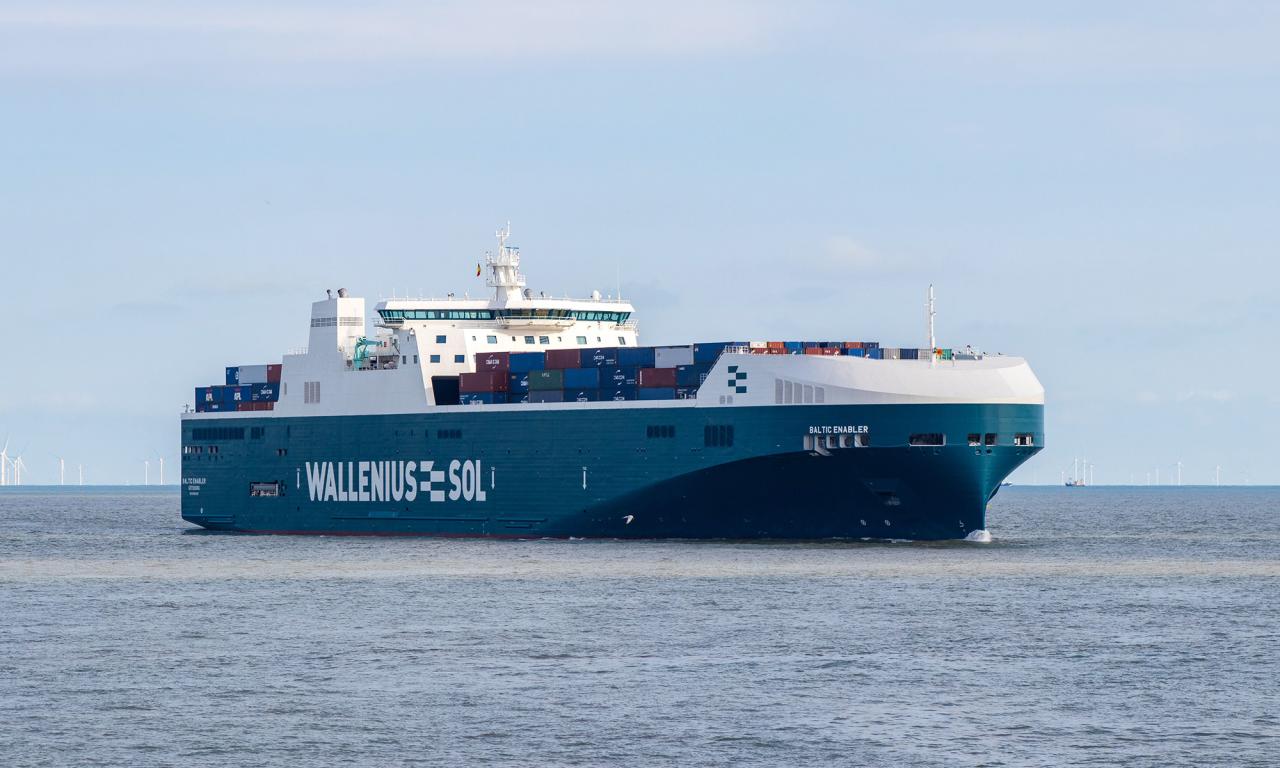Data-driven decisions for optimal vessel performance

The new WALLENIUS SOL vessels have between 3,000 and 4,000 measuring points, making it possible to save fuel and improve operational performance.
Screens fill the walls and desks at the Wallenius Marine performance monitoring center in Stockholm, Sweden. Meanwhile, on board the Botnia Enabler, between 150 and 200 sensors constantly collect engine, navigational and loading computer data which is streamed to the performance center ashore.
“We’re using the collected data to analyze and monitor the efficiency, condition and environmental performance of the vessel and the main systems onboard. The data collected are turned into insights with the use of advanced performance analysis, incorporating both physics based and machine-learning/AI methods. We review the output from the performance analysis and give relevant recommendations to vessel crew and/or ship management,” says Andreas Fridh, Performance Engineer, Wallenius Marine.
Improved performance
To improve overall performance and get the most out of the engines, both efficiency and condition are monitored. This is done by measuring indication pressures as well as the wear of critical engine components such as piston crowns, cylinder liners and bearings. The goal is to “tune with control”, providing actionable recommendations to engine crew to ensure optimal vessel performance.

Another area monitored is the performance of hull and propeller. Advanced analysis is used to quantify the impact fouling on the underwater surfaces has on the vessel’s resistance and fuel consumption. This enables trends in added resistance due to fouling to be identified, and recommendations can be made about when it is time to perform hull or propeller cleanings. The analysis also enables Wallenius Marine to evaluate and benchmark paint systems and hull cleaning providers over the entire fleet of monitored vessels to identify which biofouling management measures works best.
“We use real-time deviation monitoring, alerting the performance center if there is a problem in the operational performance of the vessels. By continuously monitoring deviations we can detect issues and incidents quickly and support both office staff and crew with recommended courses of action,” says Andreas Fridh.
He continues:
“The information provided from the performance monitoring is vital for reducing the environmental footprint.”
State-of-the-art vessels – new findings
The advanced IT environment and the high degree of digitization of the Enabler vessels makes them unique and bring new insights. They are also the first ships monitored by Wallenius Marine with multi-fuel engines and a twin engine installation.
“We’re in the final stages of the implementation phase of setting up models for these vessels. The findings we gain from the performance of Botnia Enabler and Baltic Enabler will also help our ship design team optimize the next generation vessels even further,” says Andreas Fridh.
Read more about performance management (external website).



